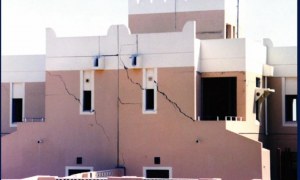🕑 Reading time: 1 minute
Soil investigation is carried out to estimate the engineering properties of soils, which depends on soil structure, i.e. nature of soil grains and their arrangement, volume of air and water (degree of saturation and porosity). Since these properties of soil varies from one location to another, the program of soil investigation need to be evolved for each project.
The soil investigation should provide adequate data and make appropriate recommendations supported by proper calculations in respect of the following:
1. The type of foundation required
2. Allowable bearing capacity for the foundation
3. Total and differential settlement that would occur in the foundation
4. Highest groundwater level ever reached
5. Anticipated construction problems and suggested solutions (sheep piling, dewatering, boulder/rock excavation, differential settlement, damage to adjacent property, environment etc.)
Soil investigation must conform to the provisions in IS1892 – 1979. The scope of soil investigation is indicated in clause 2.1 and 2.2 of this code. ASTM D5434-12 - Standard Guide for Field Logging of Subsurface Explorations of Soil and Rock is the standard code used in USA.
A copy of the surveyed site plan and layout plan of buildings indicating the type and sizes of the buildings are required. It is essential that the location of bore holes together with the reduced levels are marked on the site plan.

Fig: Soil investigation
To determine the nature and extent of detailed soil investigation, a preliminary investigation is necessary as stipulated in para 3.1.1 of IS1892 – 1979. Knowing the type of superstructure, the first step is to inspect the site and its neighborhood and collect the information about the soil profile, type of foundation generally adopted and to guess the presumptive allowable bearing pressure for the soil. This is done through reconnaissance and simple visual / manual tests. If soil investigation details are not available for nearby sites, a test pit or a bore hole may be dug to examine the soil at foundation level.
Knowledge of regional soil deposits corresponding to the locality, prevalent practices of subsoil investigation and foundation design greatly facilitate drawing up an appropriate program of soul investigation. Major regional soil deposits of India are – Alluvial soils, black cotton soils, laterites, desert soils and submarine soils. For details about soil types in India, reference can be made to Indian contributions to Geotechnical Engineering published by Indian Geotechnical Society for sources of information of the regional deposits.
More Posts on Soil Investigation


